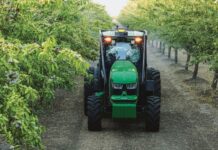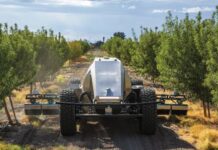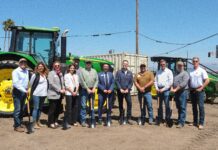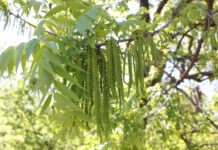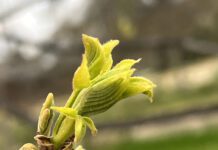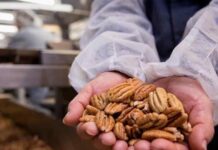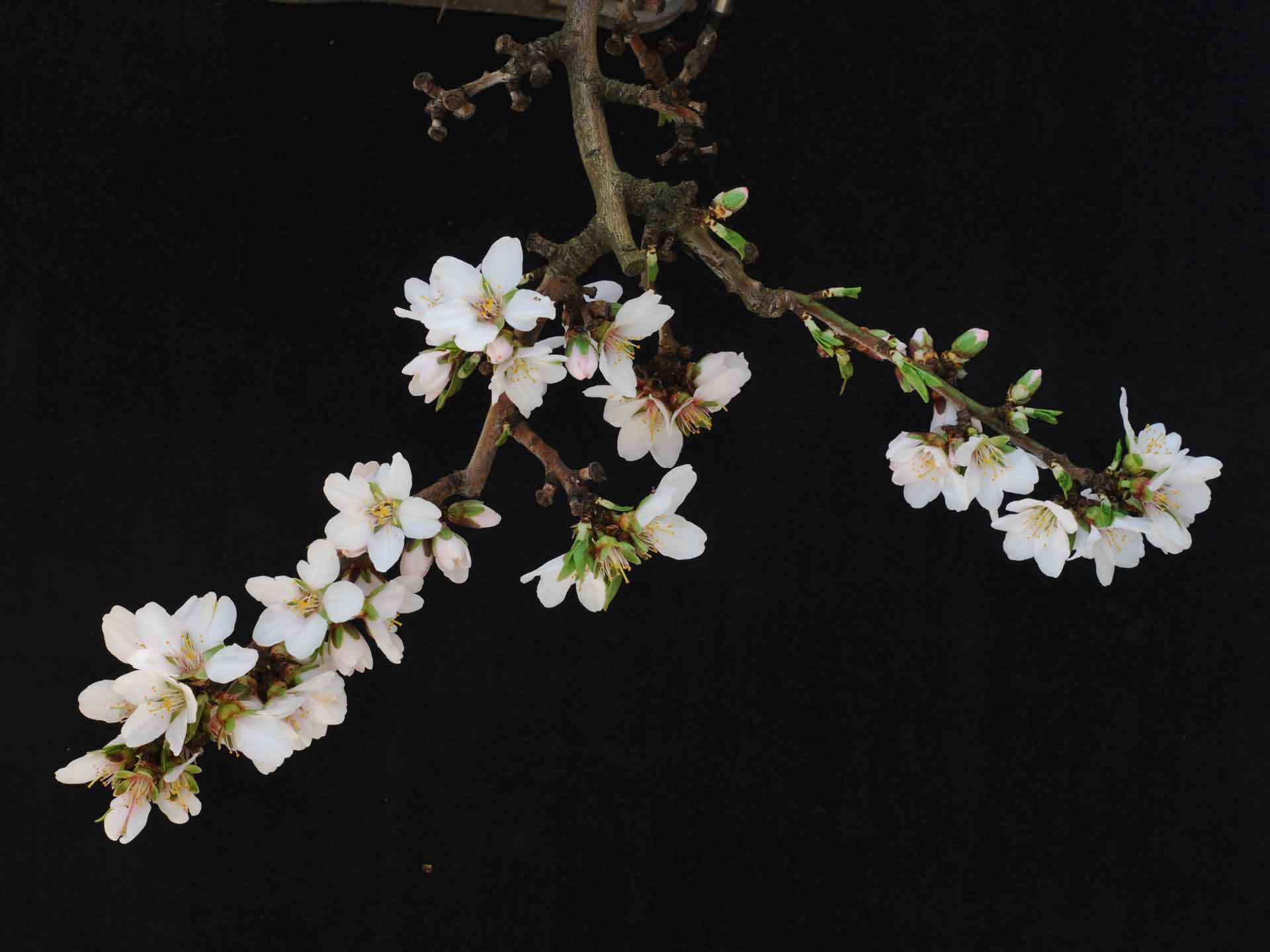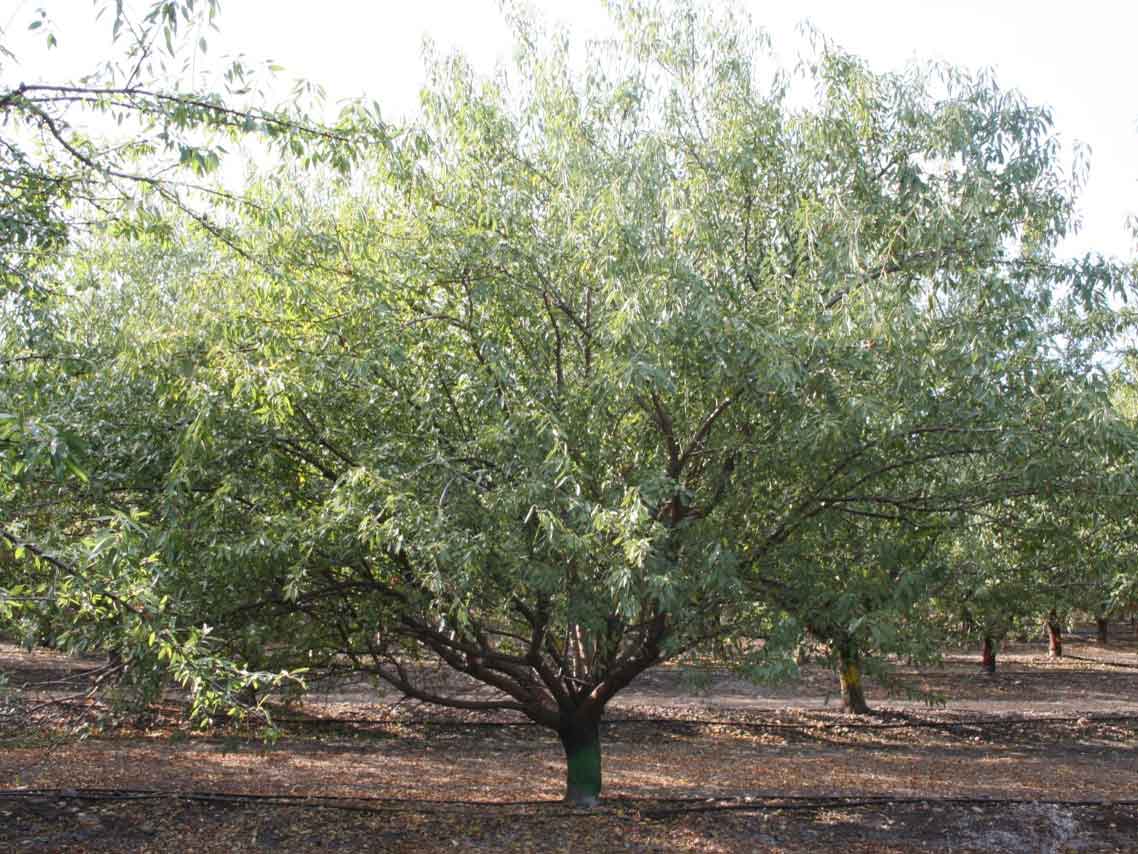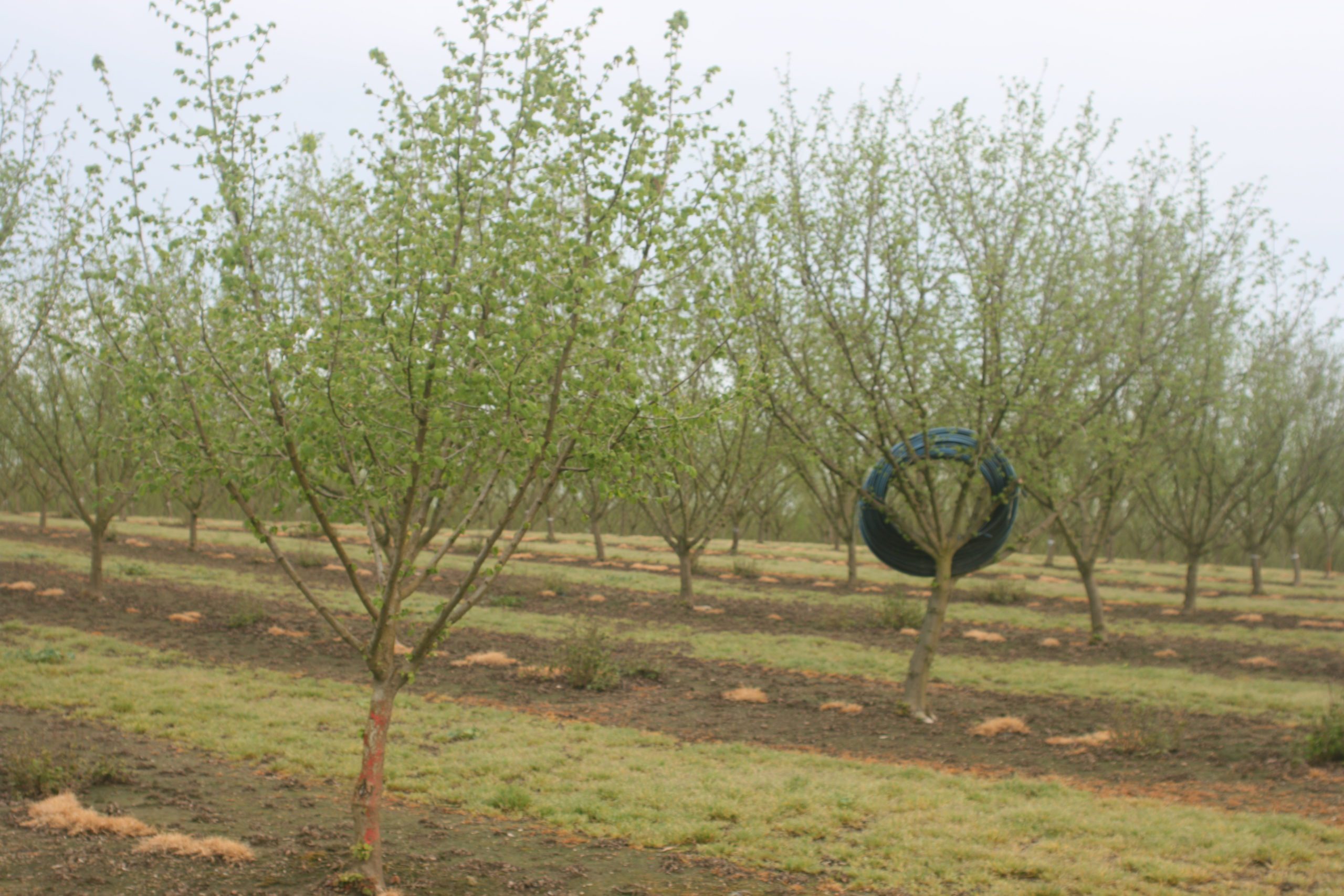
Listen to the audio version of this article. (Generated by A.I.)
A “Trees for the Future” research project is aimed at leveraging pecan tree genetics to develop environmentally resilient trees for future generations of pecan growers.
Pecans, one of two tree nut species native to the U.S., are grown in diverse geographic locations in 22 states. Pecan trees are known for their production longevity and the extended period from planting to maturity. Lack of winter chill, disease pressure, saline conditions and drought are all environmental stressors that affect production.
Pecan varieties and rootstocks are being developed for different soil, water and environmental conditions. This project, which includes a diverse advisory board representing the pecan industry, is aimed at using detailed data on native and existing pecan varieties and rootstocks to give geneticists information on genotypes that could contribute to pecan production, disease resistance and tolerance to environmental stressors.
A team of scientists were awarded an $8 million USDA NIFA Specialty Crop Research Initiative grant to coordinate development of genetic resources and tools to accelerate breeding of geographically adapted pecan trees.
The effort is being led by Dr. Jennifer Randall of New Mexico State University. The grant provides four years of funding to USDA and land-grant institution scientists as well as researchers at the University of Tokyo and the HudsonAlpha Institute of Biotechnology in Alabama. In California, the principal investigator is UCCE Tulare County Farm Advisor Dr. Elizabeth Fichtner. Karlene Hanf of Mid Valley Pecan is on the advisory board.
Assessing Varietal Differences
The initial part of this project is underway. One goal includes assessing the timing and overlap of male and female bloom of co-planted varieties over years with varied environmental conditions, including low winter chill. The researchers will also assess bud break, shoot development and bloom on many pecan cultivars to provide valuable phenotypic data that can be used by geneticists as they evaluate genetic markers to make selections to breed environmental resilience in pecans. Another part of their research is a look at quantifying damage caused by pecan leaf scorch, a bacterial disease that has been detected in California pecans but is less severe than in other pecan growing regions.
Native pecan tree phenotypic data will also be included in this project. Randall noted that native pecan trees developed in diverse geographic areas and weather regimes and could contribute genetic traits not found in developed varieties.
“This is genetic diversity we’ve never tapped into,” Randall said.
One of the emerging production challenges in pecans, Randall said, is vivipary, which is the germination of seeds (pecans) while still on the tree. This can occur due to environmental factors like high humidity or genetic mutations that disrupt seed dormancy.
“Vivipary in pecans was first reported in Mexican pecan-producing areas, and they are losing yield because of it,” Randall said. This condition has since been reported in Arizona and Texas orchards, impacting yields.
Other regional needs for new pecan genetics include salinity and drought in the Southwest. HudsonAlpha’s agriscience team specializes in applying genomic techniques to understand how plants function in response to environmental stimuli. The HudsonAlpha Genome Sequencing Center is providing de novo whole genome sequencing, assembly and analysis for the project.
The extensive data from various growing regions will be used by HudsonAlpha geneticists and the other researchers on this effort to develop new breeding strategies to meet varying environmental challenges across all pecan-growing states.
Bloom Overlap
Fichtner has been compiling extensive data on overlap of predominant California varieties, Wichita and Western, male and female bloom timing, which is influenced by winter chill. She said that in pecans, as in other tree nut crops, the number of chill hours received during the fall and winter can affect overlap of the female and male bloom and result in lower crop productivity. Pistachio growers have used various strategies to overcome low chill in their crop, one of which is the interplanting of multiple pollinizer varieties in orchards.
Another researcher, Dr. Richard Heerema of New Mexico State University, is looking at scion and rootstock combinations for water-use efficiency and production per unit of water applied.
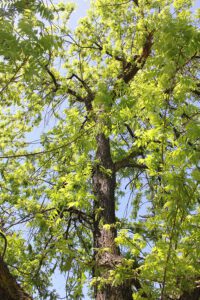
California’s Role
“We’ll be trying to make a better, more productive tree for future generations of pecan growers,” Hanf said. She added that since this is a national program, they will be assessing production challenges in all commercial pecan production regions.
Her role in this project is to ensure the research is useful for pecan growers in making planting decisions. Hanf said California pecan growers face different challenges than growers in other pecan-growing regions. Aphid damage is an ongoing concern in California pecan production, but California growers are not as impacted by bacterial leaf scorch, scab and other pests that plague pecan growers in other states.
California’s pecan production challenges, Hanf said, are salinity and drought. Currently, California pecan growers and potential growers are also facing difficulty securing trees for planting due to the closure of Linwood Nursery.
The two predominant pecan varieties in California, Western and Wichita, were developed for warmer, drier climates. Hanf said developing new varieties and rootstocks that can produce under less-than-optimum environmental conditions may enable expansion of California pecan planting. Hanf said an ideal pecan variety would mature earlier, have yields of 4,000 pounds per acre, be drought resistant, not be taller than 25 feet and be resistant to scab. She noted that rootstock development would also be a key part of the project.
She said the length of time it takes for a pecan tree to reach production is a limiting factor in California. Grafted trees may take five to eight years before yielding a commercial crop. That time span presents a challenge.
“Once they are planted, the trees have to be farmed all that time. That includes nutrition inputs because if you don’t take care of them, full production will take even longer,” Hanf said.
Ammy Reyes, a farm manager at Bypass Farms in the Woodland area, said in her experience, pecans are often planted in environmental conditions that almonds and pistachios cannot tolerate. That doesn’t mean rootstocks and varieties aren’t chosen for dealing with specific conditions. Salt has been a limiting factor, Reyes said, and trees planted in higher saline areas do not push out as early as in other non-salt-affected orchards. Later leafing and bloom push harvests back to wetter conditions during harvest.

Cecilia Parsons | Associate Editor
Cecilia Parsons has lived in the Central Valley community of Ducor since 1976, covering agriculture for numerous agricultural publications over the years. She has found and nurtured many wonderful and helpful contacts in the ag community, including the UCCE advisors, allowing for news coverage that focuses on the basics of food production.
She is always on the search for new ag topics that can help growers and processors in the San Joaquin Valley improve their bottom line.
In her free time, Cecilia rides her horse, Holly in ranch versatility shows and raises registered Shetland sheep which she exhibits at county and state fairs during the summer.




